
Children from your plants
Learn how to create “Children from your plants” with Melissa Carrera Carmona.
I am going to start this article with a story, it turns out that when I was little, my mother enjoyed sunbathing on Sundays and taking care of her geraniums, they were
pink, I remember; I also remember helping to transplant, water and remove those dry leaves, something caught my attention and it was that my mom used to cut stems from her plants and buried them in different pots, it was the way to fill the house with geraniums; I remember walking with my grandmother and I saw her cut plants that she also liked to take them home and thus have her own, surely you who read me have a similar story. There are endless ways to reproduce plants, the most common is by seeds, called sexual reproduction, but there are asexual ways, which are faster and more effective, I will tell you about those that undoubtedly work.
Cuttings
A cutting consists of making a cut from the stem of a plant, it is important to do it at a 45o angle and preferably under a node, then bury it in a good mixture of substrate or prepared soil, waiting for it to develop new roots.
There are those who prefer to introduce the cutting in water, it is important to know that the roots that it generates will be adapted to water, they can be transplanted later but it is not a guarantee that the roots will support the change.
Tips: Place in a bright place, if you have a greenhouse or you can improvise a better one, not direct sun, it is important to keep the substrate moist, and if you use water, change it every third day.
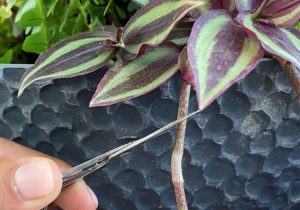
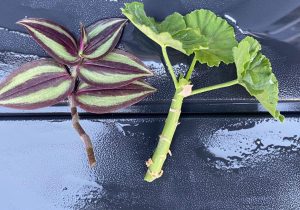
Cutting Tradescantia Zebrina and Geranium
Photography: Melissa Carrera
Stolons
Plants such as strawberry or mint reproduce by stolons. Stolons are creeping plants that grow from the base of the stem and put out roots that produce new plants. You can cut that stolon and bury it in a good substrate or plant it directly in the ground.
Tips: Make sure to keep the substrate constantly moist for the roots to develop.
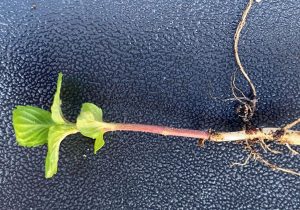
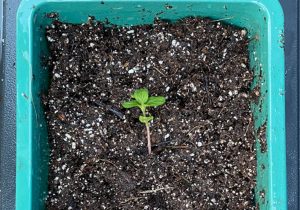
Propagation in substrate of stolon
Photography: Melissa Carrera
Fragmentation
It is a process in which an organ cut from a plant can take root and grow into a new plant. The fleshy leaves are ideal for this type of propagation, you must follow the same procedure, good substrate, always humid, well lit.
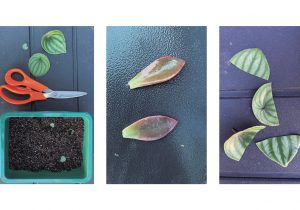
Photography: Melissa Carrera
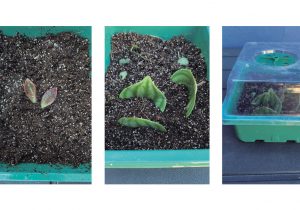
Photography: Melissa Carrera
Next, I will leave you a table with the species and the propagation method that I recommend, it is important that whichever you have chosen, you try to suspend irrigation for a couple of days to the mother plant (the one from which you cut the stem or leaf) this will allow it to heal without a problem, you can also pour a little baking soda or cinnamon on the cut, this prevents the plant from contracting any type of disease.

It is worth telling you that your tools and hands must be super clean. There are plants that are easier to propagate than others and in fact the worst that can happen is that we do not succeed the first time, but the greatest benefit is to have descendants for the following generations, there are people with “offspring”, “elbows”, “little bits” of plants that belonged to their grandparents. It is important to know about these techniques, but above all to carry them out responsibly, always ask for permission to cut if the plants are not ours, and of course avoid cutting plant organs from protected places or nurseries.











